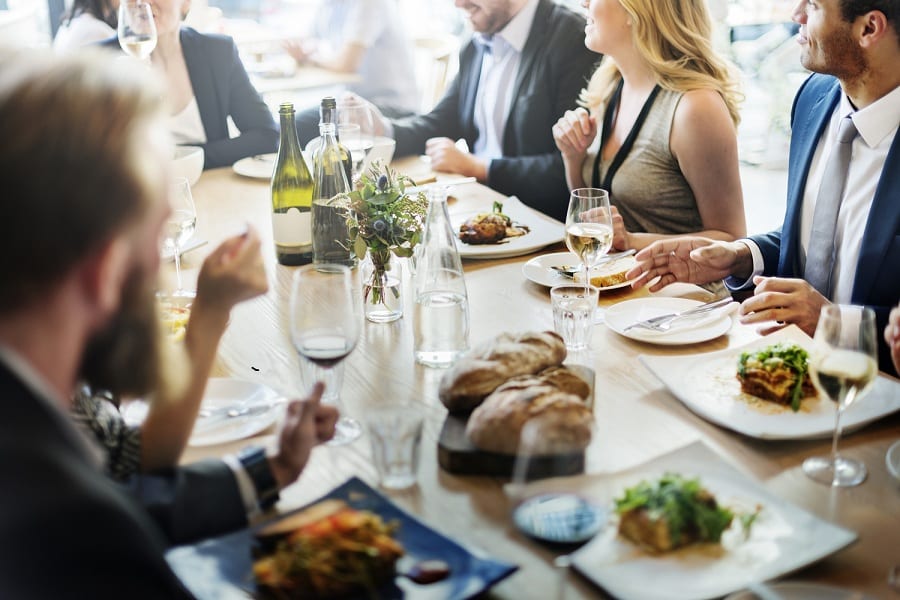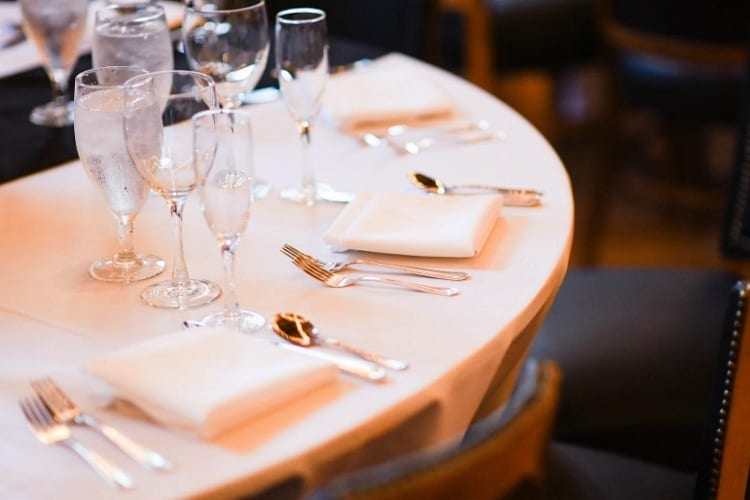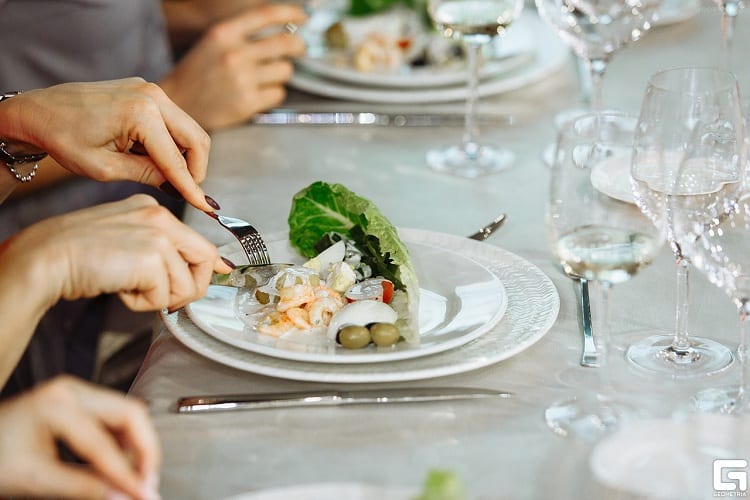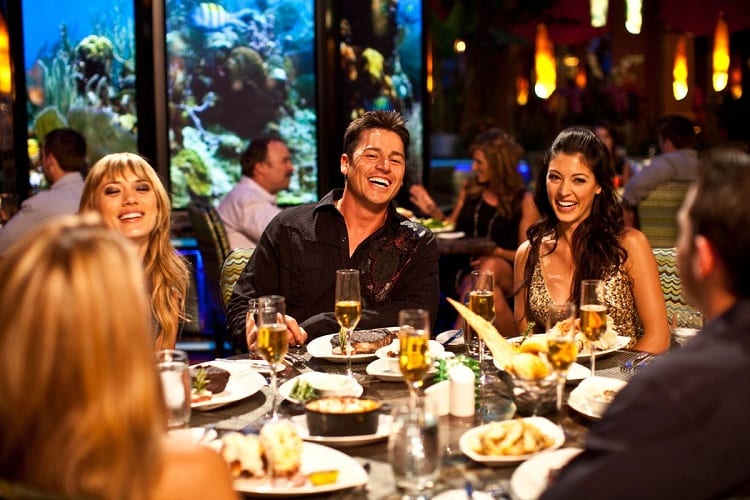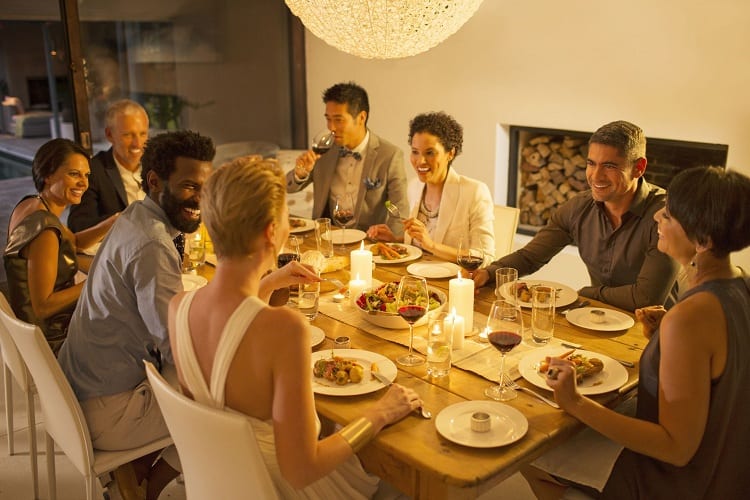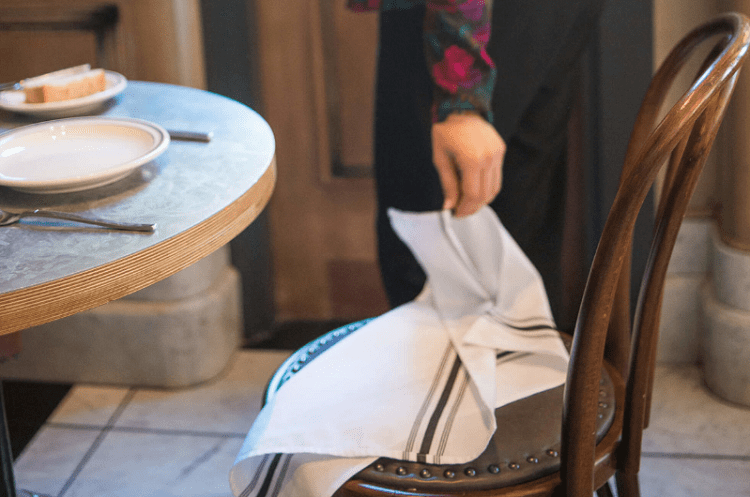Would it surprise you to learn that most people have probably broken a fine dining etiquette rule or two? This is because of how relaxed dining rules have become in our modern-day, and the casual way in which we approach meals.
Does fine dining etiquette only apply to eating meals? No – you should follow important etiquette rules before, during, and after the meal.
With that in mind, let’s explore some of the most important fine dining etiquette you should follow and use when attending formal events.
We’ll start with what you should do before you pick up your fork to eat.
Contents
Fine Dining Etiquette: Before The Meal
Here are some important dining rules you should follow before you start eating.
- If you’ve been invited to dinner, always respond to the invite even if there’s no need to RSVP as this will help the host when it comes to planning the dinner.
- If you’re dining at someone’s home, you should always bring a gift.
- When taking your seat at the table, look for place cards. If these aren’t present, ask if there are seating preferences but wait for the host to sit before you take your place.
- Take your cue from the host so that you know when to start eating. When your host unfolds their napkin, you should take your napkin from the table and place it on your lap. However, note that when dining out at a restaurant, you should put your napkin in your lap as soon as you sit down.
Fine Dining Etiquette: During The Meal
Ready to dig into the delicious food? Here are some etiquette tips.
- Don’t Lift The Menu From The Table. When eating out, the menu must always make contact with the table in one place. That means you have to move closer to look at it and refrain from picking it up. That doesn’t mean you can’t hold the menu a bit closer to you, but when you do, always strive to keep one part of the menu on the table.
- Sip From The Same Spot On Your Glass. When you take a sip of wine or champagne from your glass, make sure you continue sipping it from the exact same spot on your glass. This is to prevent that unsightly lip stain from appearing on your glass, which can happen as a result of lipstick or chapstick.
- Don’t Clink Glasses. You have probably clinked your glass with other guests’ glasses many times before, but it’s a fine dining no-no! You should never do this because it could cause the glass to break. In formal dining settings, delicate glassware is often used. Refraining from clinking is also good for another reason: it prevents noise.
- Set Aside The Upper Left Part Of Your Plate. You’re enjoying your meal, but you have a lemon or melon rind or fishbone that you need to throw away. Here’s what you should do with it when fine dining: put it in the upper left part of the plate. This is the part that’s reserved for things you want to throw away. FYI, the bottom right part of the plate is reserved for butter and sauces.
- Fold Your Napkin Properly.
You have to fold your napkin in half and ensure that the crease is facing you.
If you spill sauce on your shirt or the tablecloth, dab at it with the napkin and then close the napkin so that the stain is on the inside of it. This prevents it from looking dirty or messy.
Know Which Utensils To Use
You might feel intimidated by all the utensils and glassware around your plate, but don’t worry.
An easy rule to follow is to start on the outside and work your way in, meaning that for your first course you’ll pick up the knife and fork that are the furthest away from your plate.
It’s also worth noting that a fork, spoon, or both items might be placed above your plate horizontally. These are desert utensils that you’ll need when that course is served.
Take Small Bites
You should never put the entire fork or spoon with food into your mouth. Fine dining etiquette is about taking small, delicate bites.
Add Seasoning To Food After Tasting It
You should always taste the food before adding salt or other seasonings to it, otherwise, this can be an insult to the person who’s cooked it.
Make Sure You Eat Tricky Foods Properly
You can’t avoid the situation of some foods being more difficult to eat elegantly, but that doesn’t mean you should put your good manners aside. Here are some tips.
- Don’t use your fork tines up. What this means is that your fork shouldn’t be used as a shovel. Your fork tines should always be faced down at your plate.
- If you’re eating food, such as peas, that is difficult to get onto your fork, you can squash them. Use your knife to squash the peas onto the fork’s downturned tines.
- If you’re eating food that has pips or stones, such as cherries, you should never spit them out onto a fork. Instead, put the cherry into your mouth and gently remove the stone with the use of your forefinger and thumb, then put it on your side plate or on the upper left side of your plate. You should never put the stone or pip into your napkin.
- When eating dessert, you might have been given a spoon and fork to eat it. You should use the fork to place the dessert onto your spoon. Never eat dessert directly from the fork.
Eat Everything But The Last Bite
This might sound strange. After all, if you enjoyed the meal you would want to finish it.
But etiquette is about striking a balance between enjoying your food without looking like you’re famished.
If you finish every last morsel on the plate, this can show the host that you’re still hungry or you didn’t feel like the food was enough.
What About Conversation Etiquette?
While you’re eating you’ll also be having conversations at the table. You should have good conversation etiquette to avoid offending anyone or making the atmosphere uncomfortable.
A good tip is to avoid talking about sensitive topics, such as religion and politics. Here are some other tips to bear in mind:
- Try to give your attention equally to the guests on your right and left. If you only speak to one person all night, that will be seen as rude.
- Avoid asking people personal questions about themselves if you don’t know them well.
- Never complain at the table as that negative energy will put a damper on the whole evening.
- Avoid speaking too much about business, unless everyone at the table can participate in the conversation or the event was set up for the purpose of discussing business topics.
- It should go without saying, but switch your cell phone off before you sit down at the table.
Fine Dining Etiquette: After The Meal
When the meal is finished, that doesn’t mean the etiquette can come to an end yet! There are still a few important things to do.
- When you’ve finished eating, partially fold your napkin and rest it on the left of your plate.
- When the host says that the meal is over, you are allowed to leave the table.
- You should try to stay at your host’s home for about an hour before leaving, otherwise, it looks like you just wanted to eat and dash!
- When you’re ready to leave, say goodbye to the host and thank them for the wonderful dinner.
- If the evening is casual or you’re friends with the host, you should offer to clean up.
- A day or two after the fine dining event, send your host a thank-you note in the mail. It can be short but make it heartfelt, such as by expressing your gratitude.
Related Questions
Do you have to keep your napkin on your lap for the entire dinner?
You should ensure your napkin stays on your lap until you’ve finished eating the meal. If you have to leave the table during dinner, put the napkin on the side of your plate.
When you’ve finished eating, put your napkin on the table, to the left of your plate (via The Spruce).
When can you start eating?
In a home setting, take your cue from the host or hostess. When eating out, wait until everyone’s been served their food.
If you’re at a buffet, you can start eating when others have taken their seats at the table.
Conclusion
Having good manners at the table will make a great impression on the dinner host or people you’re dining out with at a fancy restaurant.
In this article, we’ve looked at what you should and shouldn’t do before, during, and after a meal.
Resources:

